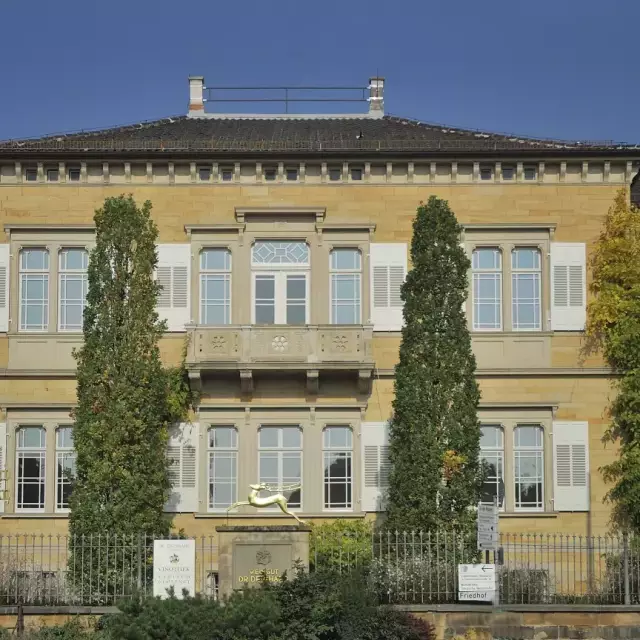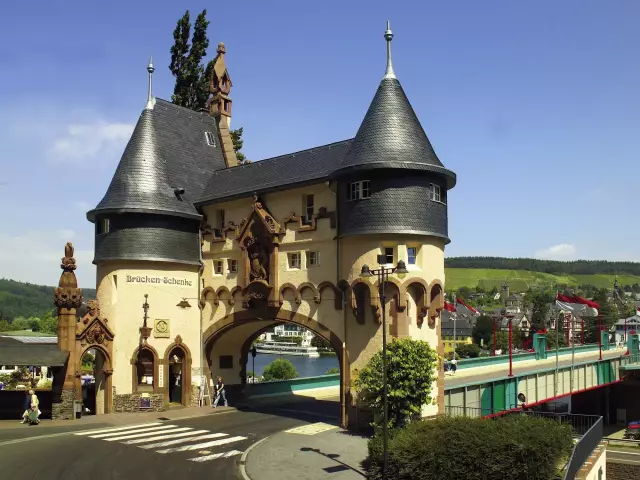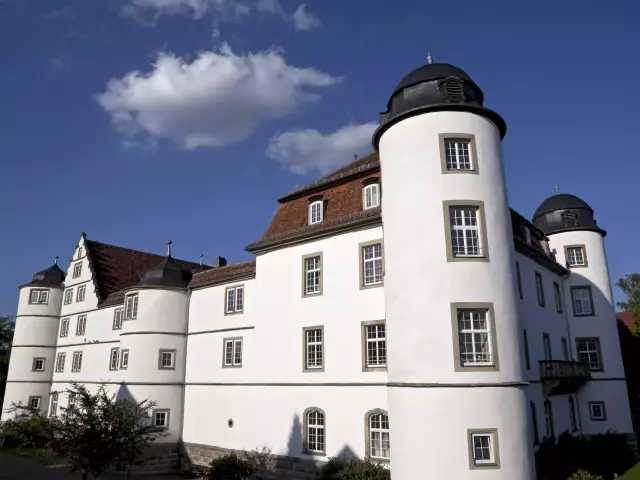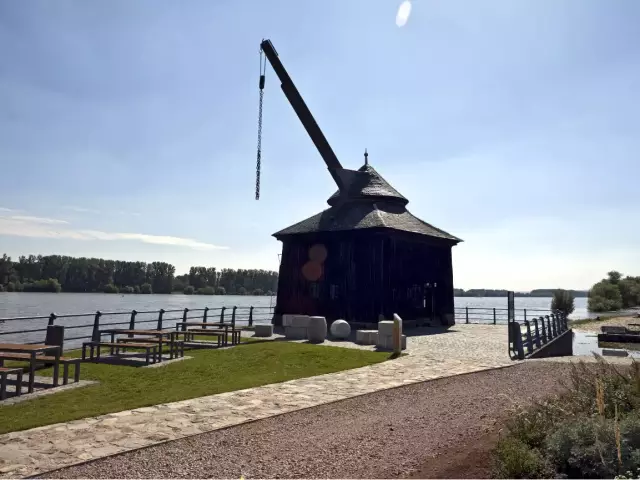Wine city of Deidesheim

In this city, the first wine of high quality range was made within the region of Palatinate and this city shaped German wine politics to a large extent: there's hardly any other city in Germany which earns the label "Cradle of German Quality Wines" as much as Deidesheim.
Today, 85 professional wine makers can be found within its range, among them the great names of the German wine makers' guild like Bassermann-Jordan or Reichsrat von Buhl. The wines from the Reichsrat were once praised by Chancellor von Bismarck, with wines from this estate the guests cheered the opening of the Suez Canal – the products of the Reichsrat estate once belonged to the most expensive wines of the world.
It is no coincidence that these most famous estates can be found in Deidesheim: The community on the slopes above the Rhine river lies sheltered by the Palatinate forest and receives only little rainfall but a lot of sunshine over the year – an almost Mediterranean climate in which figs, almonds, oranges and especially grapewines are thriving. Thus in Ungstein, only ten kilometers north of Deidesheim, leftovers of wild grapevines were found that are considered 4,5 million years old. Viticulture, however, was brought by the Romans to the Rhine valley, which is proven by wine amphoras and a glass mug formed like a cask which were found in Deidesheim.
In the Middle Ages, Deidesheim belonged mainly to the nobleman Erimbert from Lorraine and his successors – among them some of the Earls of Metz, some dukes from upper Lorraine and some of the Salian line – until the Bishop of Speyer became the owner in 1086, including the vineyards which were first mentioned around the year 700. With the so called "Ungeld", a wine tax, the building and preservation of the city wall was financed. City rights are accounted for in 1395, the history is afterwords marked by wars, sackings of the city and fires. Viticulture remains the city's backbone: in 1504, sources talk of the grape variety "Gänsfüßer" – meaning goose's foot – thus denoting the earliest notation of a grape variety in Deidesheim.
Deidesheim's heydays, however, came at the beginning of the 19th century: In 1802, estate owner Andreas Jordan was the first to produce high quality wines according to strict selection rules, and the first to introduce the Spätlese in Palatinate. Jordan is also the first to use the vintage, the grape variety and the vineyard site to characterize his wines, thereby setting the trend which will make Deidesheim world famous. When Jordan died in 1848, his enormous estate was split into three, a procedure which has become famous under the name "the Jordan Division." By it, the estates of Geheimer Rat Dr. von Bassermann-Jordan, Reichsrat von Buhl and Dr. Deinhard were formed, all of which became famous on their own.
Jordan's inheritors also became famous as wine politicians: His grandson Ludwig Bassermann-Jordan took an important part in the reshaping of the German wine law in 1909 and was one of the founders of the "Society of Natural Wine Auctioneers" in the Rheinpfalz region – better known today as the Association of German Quality and Prädikat Wine Estates, the VDP. Franz Armand Buhl, however, another one of Jordan's successors, was founding father and president of the German Association of Viticulture and also the author of the law for fighting phylloxera in 1873.
Across Deidesheim, witnesses of that time of greatness can still be found: The Ketschauer Hof, a mansion built in 1770, today the seat of the Wine Estate of Bassermann-Jordan, the city castle, the former Spital - or the Gasthaus zur Kanne which was once built for the Cistercian monks, but which has been run as a tavern since 1374 – it's the oldest tavern of the Palatinate region. The viticulture of Deidesheim, however, is on display in the Museum of Viticulture, which opened in 1986 in the rooms of the historic town hall building.




